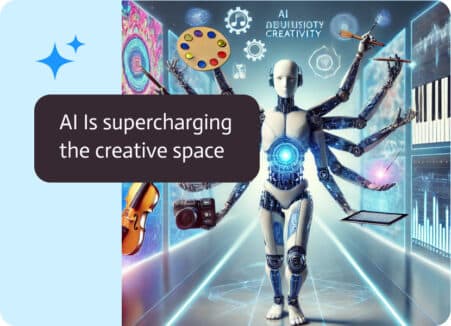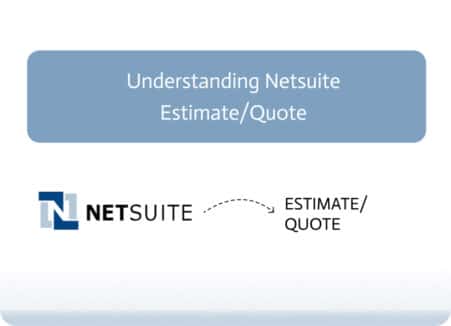

How to Integrate Digital Workers Into Your Business Without Disruption
There’s a moment every modern business hits, that uneasy pause between “We should automate this” and “Oh no, we’ve broken everything.” That’s exactly when companies realize the need to integrate digital worker solutions to automate processes safely and efficiently.
That’s the tightrope companies walk when bringing in digital workers into the frame. Those tireless, code-based colleagues who never call in sick, don’t need caffeine, and can run through a hundred repetitive tasks before lunch. When done right, digital workers amplify your team’s performance significantly, and all while quietly shaving hours off processes and letting staff turn their attention to strategy, creative endeavours, and building closer relationships with hard-earned customers.
However, if done poorly? They can cause confusion, downtime, and a chorus of frustrated employees wondering what exactly they’re supposed to do now that a bot is answering their emails.
The goal isn’t just to plug in automation, it’s to weave digital workers into your business fabric so smoothly so as to feel more organic and not disruptive.
Start With the “Why,” Not the Hype
Automation is cool. AI is cooler. But “cool” doesn’t pay the bills, its outcomes do.
Before you start implementing digital workers, ask yourself why. What exact issue are you trying to fix? Maybe your finance people are spending too much time on invoices. Maybe customer service is stuck answering the same inquiries over and over. Maybe you’re scaling fast and need 24/7 coverage without hiring a small army.
The key is not to get ahead of yourself and begin with a small part. Identify one process where automation makes an obvious, measurable impact, then build a proof of concept and let it run. Watch what happens, and only then consider expanding.
Digital worker integration isn’t a sprint; it’s more like fitting a new organ into a living system. The healthier the system you initially begin with, the easier the transplant.
Map Before You Move To Build Clear Automation Workflows
You wouldn’t install solar panels without knowing how your electrical grid works. Similarly, don’t introduce digital workers until you’ve mapped your procedures. It’s where process clarity separates the pros from the panickers.
List every step in the process you’re automating. Identify what humans do, what software does, what data passes between them, and where errors creep in.
You’ll often discover inefficiencies you didn’t even know existed, like extra approvals, redundant entries, and outdated rules. Cleaning these up before deploying a digital worker is like clearing the runway before takeoff.
Once mapped, decide who does what:
- Human zone: Judgment calls, relationship management, and creative thinking.
- Digital worker zone: Routine tasks, rule-based processes, and data movement.
- Hybrid zone: Workflows that benefit when people and digital workers team up. Maybe digital workers prepare information, and people finalize it.
It’s the combination, not blind replacement, that keeps operations flowing smoothly.
Bring People In Early (or Face Mutiny Later)
The fastest way to derail automation? Keep it a secret.
Employees aren’t anti-automation; they’re anti-surprise. The idea that “bots are coming for our jobs” spreads quickly when teams are left in the dark. Instead, make integration transparent from day one.
Host Q&A sessions and demo early versions. Show how digital workers actually remove the dull parts of people’s work, not their purpose.
Better yet, involve your team to help decide what the digital workers should do. The people closest to the process often have the best insight into what shouldn’t be automated and what absolutely should. When staff feel like co-creators instead of casualties, adoption skyrockets.
Choose Tech That Integrates With Your Stack
This is a mistake too many companies make; they end up buying fancy automation software that doesn’t quite integrate with anything else they use.
A good digital worker isn’t a lone genius; it’s a team player. It should easily connect with your CRM, ERP, and help desk. It should handle moving data around cleanly, not force humans to do digital babysitting.
When evaluating tools, consider:
- Interoperability: Does it plug into your current stack with minimal custom work?
- Governance: Can you control who does what, see what’s happening, and make sure you’re following the rules?
- Scalability: Can it grow with your company, or will you outgrow it in six months?
- Security: Because giving a bot system-level access without guardrails is how you end up on the wrong side of cybersecurity laws.
Adding digital workers is as much about having the right framework in place as it is about having the right software.
Upskill Your Team for Digital Collaboration
There’s the common misconception that this digital transformation is about swapping humans for bots, even though it’s more about leveling up the humans.
When digital workers take over the boring tasks, your employees’ jobs change. They move from “doing the thing” to “managing the system that does the thing.” That’s a big shift, and one that calls for new abilities, such as data interpretation, automation oversight, exception handling, and process optimization.
Give your people training and teach them how to work with digital workers effectively. Offer mentoring and career-path updates that make this evolution feel like a promotion, not a threat.
After all, if you treat automation as an upgrade for your people, it’ll never feel like a downgrade for your culture.
Monitor, Track, and Make Changes
Automation isn’t “set it and forget it.” Digital workers need the same performance reviews as humans, and sometimes, maybe more often. Track things that actually matter:
- Time saved
- Accuracy improvements
- Employee satisfaction
- Error rates
- Cost reduction
Once this has been done, close the feedback loop. Talk to the teams that are working closely with your digital workers. Ask if this is helping or hindering. Are there new bottlenecks? Are tasks being done correctly or just faster? Refine, retrain, and adapt, because integration is a living process, not a launch event.
Create a Culture That Welcomes Digital Collaboration
Here’s where most digital transformation strategies sink: culture.
If people see automation as a rival, you’ll face friction at every turn. But if they see digital workers as assistants that make their lives easier, you’ll see productivity soar.
Leaders need to set the tone, so remember to celebrate wins that come as a result of human–digital collaborations. Share metrics that show how automation freed up hours for strategy or innovation, and give those employees recognition when they successfully “manage” or optimize digital workers.
The point should never be to create two separate teams, because people and bots should act as one blended workforce where both bring their talents to the fore. It’s when digital workers become just another part of “how we get things done,” and disruption disappears.
Plan for the Bumps in the Road
Even the best integrations hit turbulence. Bots fail, APIs break, data formats change, and rules evolve, the trick is not to panic but to prepare.
Have fallback systems and problem resolution paths in place. Give your staff control for stopping, restarting, or correcting digital workflows. Make sure there’s transparency in decision-making, especially in customer-facing interactions.
It’s more akin to driving a Tesla in that sense. Automation helps, but you still want your hands near the wheel.
Where Noca Fits In Your Automation Journey
Now, if all of this sounds like a lot to coordinate, it really is, and that’s exactly where Noca comes to the rescue. Noca doesn’t just help you deploy digital workers, it helps you design, integrate, and manage them across your business ecosystem without the chaos that usually comes with it.
Now, rather than patching together automations or juggling five tools, Noca acts as a unified command center for your digital workforce where you can:
- Map out your workflows visually.
- Deploy intelligent digital employees across different departments.
- Connect conveniently with the tools you’re already using (CRM to ERP)
- Keep an eye on performance in real time
But what really sets Noca apart is its human-centered automation philosophy. It’s built for collaboration, not replacement, meaning your digital workers are created to work together with your teams, learning, adjusting to protocols, and continuously maximizing outcomes over time.
Whether you’re automating onboarding, managing invoices, or coordinating multi-step customer interactions, Noca turns integration from a headache into a handshake.
The Takeaway
Bringing digital workers into your business doesn’t have to be disruptive. The chaos only happens when automation is rushed, disconnected, or not understood properly.
When you take the necessary time to establish articulated goals, map processes, involve people, and pick the right tools, digital workers become what they were always meant to be, basically an extension of your best people, not their replacements.
Done right, they quietly elevate your business by turning tedious processes into streamlined systems, data into insight, and employees into innovators. And if you’re ready to see what seamless integration really looks like, Noca is a good place to start.
Integrating Digital Workers (FAQs)
1. How long do digital workers take to show results in a business?
It depends on how complex things are, but most companies start seeing results in weeks. Starting with one process in one department ensures a smooth transition while mitigating mistakes.
2. What jobs can digital workers handle?
Anything that adheres to rules or is repetitive. Think data entry, reports, onboardings, scheduling, sorting emails, billing, or even working across different systems.
3. Do digital workers replace people?
No, they help them. The best solutions make people’s jobs more about strategy, not grunt work. Digital workers are high-speed assistants, not competitors.
4. How do you avoid resistance to automation from employees?
Be open and provide training. Involve employees early, show them how digital workers free up their time, and encourage them to learn. People support what they help create.
5. What makes Noca different from other platforms?
Noca focuses on digital employees that are smart, integrated, and focused on results. It’s not your average task bot; it’s about having digital teammates that fit into your business with as little disruption as possible.


